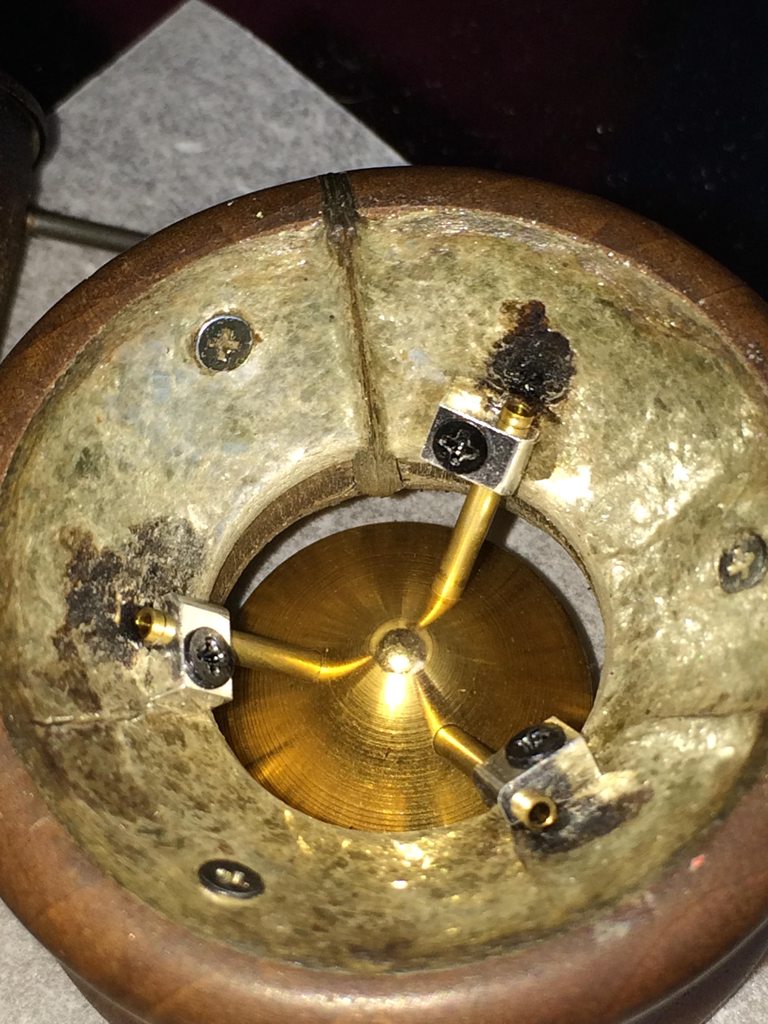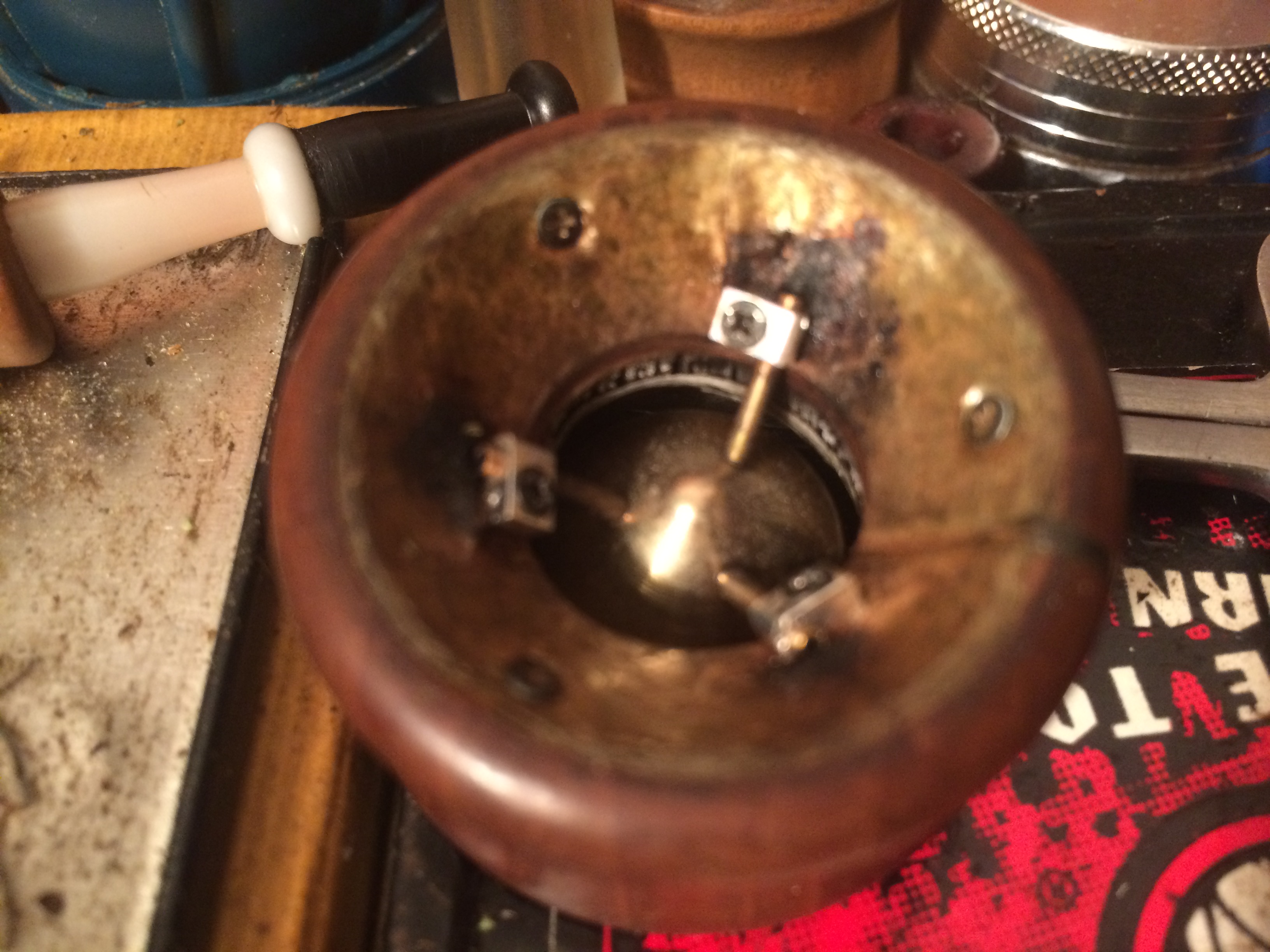Hello, FC friends.
It appears that Mr. Mellish has lucked into an unexpected opportunity be the first FC’er to meet René in person. Better still, it appears Mr. Mellish is the first to meet him in
The Shop.
Let’s answer a few expected questions at the outset.
· Yes, Switzerland is as beautiful as you expect it to be.
· Yes, this man is as nice as you expect him to be.
Having met René in person, I must warn you that he looks a bit different in person than in the videos. Here is a shot of René staring wistfully out to sea:
OK, I’m kidding. That is Aramis. He is the dog of René’s business partner, Adrian. I include him here because he is an awesome dog and, frankly, is more handsome than René or Adrian.
The office can be found in an unassuming industrial building near the old town center of Biel, Switzerland. Enter and go up the stairs an you’ll find a roomy office that provides the space needed to stock inventory and for all of the equipment used to produce the Vapman and the Vapman station. This is a big deal because, as you see some of the equipment the team uses to produce the Vapman, you’ll need to bear in mind that this equipment was once crammed into one room at René’s house.
You get a sense of René’s enthusiasm from his posts but that does not come close to showing the passion he has for his creations. While many of today’s vaporizers are produced by committee, with a focus on the next tweak and on profitability, this vape was created by a man who loves him some ganja and who wanted to find an efficient and healthy way to consume his favorite earthly vegatation (although, I can say that he also gets very, very jazzed pointing out trees and talking about their utility as VM material).
This man is creative and driven but he brings a different perspective to vape design. His first question isn’t how he will make money or how many cool options he can throw into it. His focus is this: How can I make a highly efficient vaporizer and make it as simple as possible? He then begins to ask himself how to preserve the flavor and to ensure the effect. Based on the vapes I have and the threads I read about other vapes, I don’t think I’m too far off track on this observation (although I admit it is not all encompassing).
I’ll pause here to say that I don’t use the VM as much as some of my other vapes and I’ve shared this with René. It isn’t because I don’t love it, it’s because the butane form factor is trickier to deal with in my personal situation. This write-up is going to seem glowing but that is because of the sincere focus and passion that René brings to his efforts. I did not receive anything from him and, in fact, reluctantly turned down offers to test his various devices because I was looking at a 2.5 hour drive and really didn’t want to lose work time sitting in a jail in Europe.
Let’s take a look at the shop:
This is where the magic happens and much of this was jammed into René’s house before they took over this office space (yes, that INCLUDES the venting system you see to collect dust as René’s runs his lathe and his sander). René built the venting system himself.
This lathe is what started it all. René bought this device, built decades ago, and uses it for a variety of things. He uses it to build his own jigs, to shape the custom Vapmen, and to service the other tools he uses. His jigs are incredible. I’m not a toolmaker but I’ve worked in manufacturing and his tools are amazing. The precision and fluid motion (if required) of these jigs leaves nothing to chance. You don’t hear about Vapman returns because of the precision built into the jigs and the design (and it’s a good thing you don’t because René is shattered on those rare times that it does happen – e.g., the Vapman Station) . And, you can’t really appreciate the stunning complexity of this simple little device until you’ve seen partial assemblies and bins of parts. Your electronic vape may have more parts but it absolutely does not have the attention to detail and quality that this vape does. René points out that the VM has never been duplicated because no one could or would go to the trouble of building the fixtures necessary to produce a suitable rival.
Next up, this station is where he sands the Vapmen and where he does the precision drilling. It is not obvious from looking at the assembled Vapman but this device includes 16 custom screws that have to go into holes drilled at some crazy angles. However, as a former CNC programmer, René is comfortable working in 5 dimensions.
This station is the place where some of the final assembly is done. For example, the “wok” (as René refers to it – I actually like that because it points to his inspiration but I still prefer cauldron) and the pins and springs are attached here.
This concludes my very rapid introduction to the production area. Now for a few random photos, including the friction-based Vapman (the only device he feels could use additional design and simplification work).
To your left, as you enter the office is a display cabinet that I cannot believe I forgot to get a full picture of. The top shelf shows Vapmen made in a variety of woods. Each presents a unique color and grain pattern that is gorgeous in person. The lightest one between 5:00 and 6:00 is made from a tree in René’s yard and has very little grain at all.
The fully disassembled Vapman rests on a chunk of tree from Australia that a friend gave him. In that breakdown, you get a better sense for all the screws required and the odd angles in which they need to be installed.
The two pins you see near the mouthpiece are the ones that keep the stem attached to the body. They are the only off the shelf item in the entire Vapman assembly.
If you look carefully beneath the Vapmen, you will see this bad boy:
If I could have anything found in The Workshop, it would be this wonder. It has a fully glass vapor path, runs the vapor through water, and uses an adjustable halogen bulb to heat the material. René said he starts it on the highest setting and then backs the temperature off as he begins to feel the draw resistance change. This is the first thing René built and it was a bit of a copy of the Aromed. It’s beautiful and looks highly effective. There are still a few available for sale.
Below, you’ll see the outer cannister and the electronic assemblies for the revised Vapman Station. Yes, Virginia, there will be more Vapman Stations. Although I did not try the Station, René did demo how it works and it really is amazing. It seems like the perfect device for people with dexterity issues or other impairments that affect their ability to use a torch, or even some of the other electronic devices on the market. As an example, René has a blind customer who loves the Station. René shared with me that, because he is the center of the Vapman Universe, the straight up setting on the Station dial is his preferred setting. It appeared to be a very gentle and safe way to vaporize herb and René insists it hits him harder than a Vapman on its own.
Finally, the infamous friction-based Vapman.
As I was preparing to leave, René followed me out to the street where my car was. We talked for another hour about the vaporizer market and about his ideas for the future. He has broad depth of knowledge of the market, some of the players, and his own thoughts on what works, what doesn't, and what might down the road. Someone should try to convince him to do an Internet fireside chat.
Thanks for taking the time to read this. Sorry the photos weren’t better but I’m just not that great a photographer and it was a last minute thought to do this. Glad I could take one for the team on this one.
Several attempts to upload the video of René demonstrating the friction VM failed. Too bad, it was fun to watch!























 . I will let you know ;-)
. I will let you know ;-)